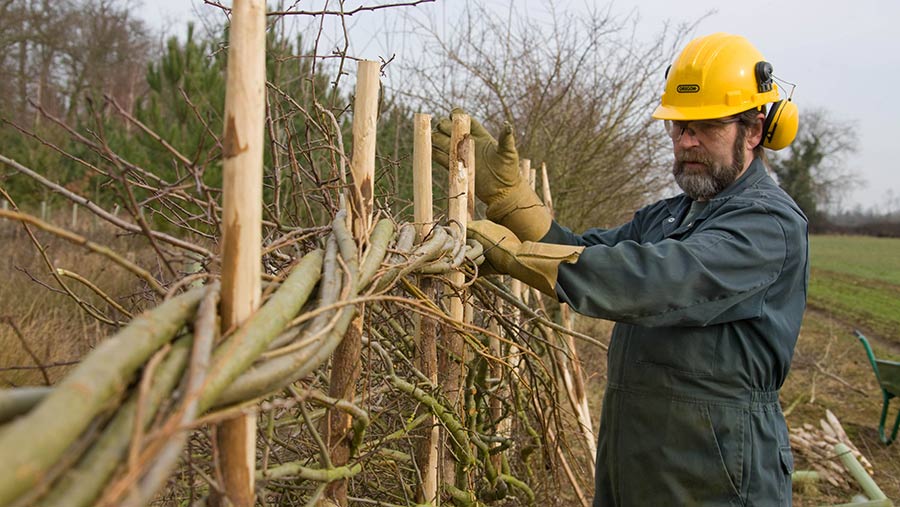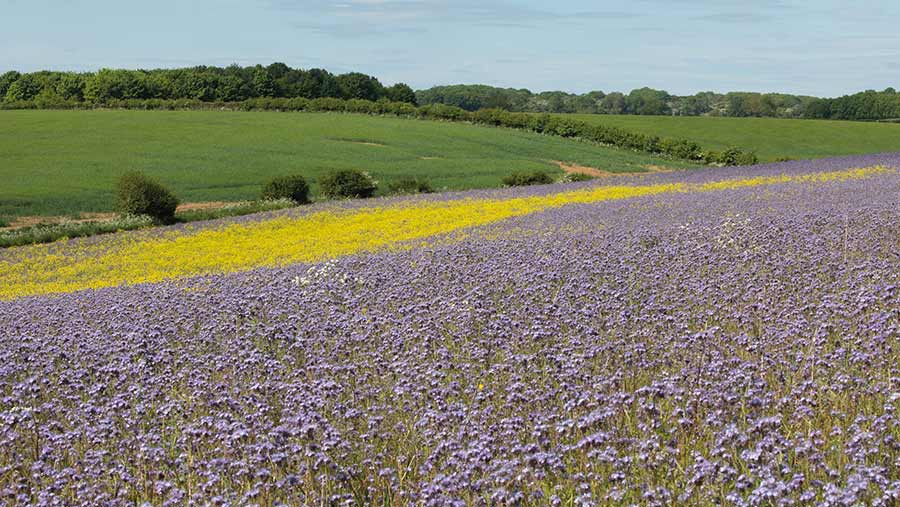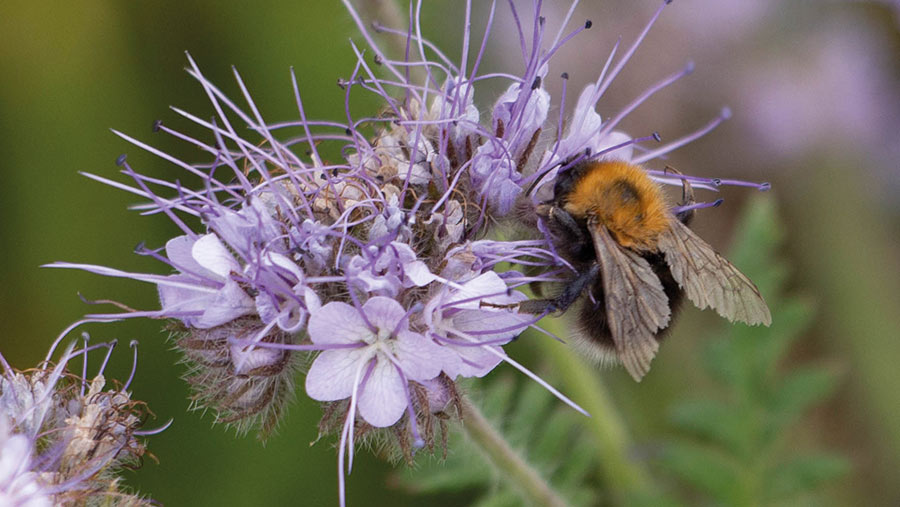Environmental Land Management – your questions answered
 © Tim Scrivener
© Tim Scrivener Earlier this year, after much clamour for more detail about the new post-Brexit policy for English farmers, Defra finally set out its plans for the next stage of its Environmental Land Management (ELM) scheme roll-out.
In addition to the three existing Sustainable Farming Incentive (SFI) standards, covering arable soils, grassland soils and moorland assessment, came six new standards.
These cover environment-sensitive management of hedgerows, pests, nutrients, arable land, improved grassland and low input grassland, with payments ranging from £45/ha for doing without insecticides to £732/ha for providing strips of winter bird food.
See also: Two growers weigh up the pros and cons of SFI
The announcement also included a raft of Countryside Stewardship (CS) options – 250 in total – with more to come next year.
With more than 100 pages published, there is a lot to digest and many questions to be answered.
To help, the Tenant Farmers Association and the National Sheep Association have recently held “dial in” sessions with Defra’s future farming programme director, Janet Hughes.
Here is a flavour of what was learned:
When will the six new SFI options be available?
This summer – I can’t give a specific date as I do not want to under-promise or over-promise.
We are aiming for two things. The first is to have an automated service so that, when you log in, you can quickly see which standards you are eligible for and apply for them.
Second, we want you to be able to stack different options on the same parcel of land, so that you can have, say, a soil standard, an integrated pest management option, a hedgerow option and a field margin all on the same plot.
To do that, we have to build the system and that takes a bit of delivery.
Why enter SFI now when there are six more standards in the pipeline?
Rule number one is that nobody who has already entered a scheme can possibly be put at a disadvantage.
So if you apply now, we can turn it around in two weeks, you can start the next month, and get paid three months after that. And then, when the new standards start this summer, you’ll be able to add those on too.

© Tim Scrivener
Currently, only BPS applicants are able to apply for SFI, which excludes smaller producers. Will this change?
The requirement for SFI applicants to be BPS registered is a blunt way of us limiting it to farmers only. But this does mean that if you have less than 5ha, you can’t currently join the scheme.
We plan to change that from 2025 (when BPS will be delinked from land anyway) – not so that people with allotments can claim, but so that people with intensive horticulture or poultry units can participate.
And what about Countryside Stewardship?
If you’re not in CS, or even if you are and want another agreement on the side, then applications for Higher Tier and Mid Tier for 2024 are now open.
It’s worth a look now, because if you are in CS, we will evolve the scheme with you in it.
Given that I’m already in a CS scheme, can I also access SFI?
Yes, so long as we’re not paying you for the same things twice, or for incompatible actions.
It might be that you’re in CS on every bit of your land and it covers all the things which are in the 2022 SFI soil standards already – so you’ve not got a lot of options there now.
But you should be able to add some of the new SFI 2023 standards coming this summer.
When can we expect to see the new £20/ha management fee for SFI?
If you are already in the scheme, you are accruing it now, but we will not be paying it until later in the year, once we’ve worked out the most straightforward way of doing so.
Has the government lost interest in upland farmers? There seems to be little that comes even close to matching the BPS cuts we face.
We are certainly interested in the uplands.
We’ve already put the moorland standard into SFI, focused on assessing the condition of the moorland, and for 2023 we’ve brought forward the low-input grassland option that we were only going to introduce next year.
And there will be more to come in SFI – things to do with improving water quality, managing moorland and rough grazing, and managing on-farm trees and woodland.
As for CS, we have added more options for the uplands, and many of the payment rates have gone up significantly. For example, low-input grassland now pays £98/ha – it was £16/ha.
If you’re already in a scheme, which many upland farmers are, you can add to that by having another agreement alongside, or transferring from HLS into CS Higher Tier.
But if you don’t want to leave HLS, you can extend that for five years, and have CS on the side, with access to those increased prices and options.

© Tim Scrivener
Is it fair that, is some cases, upland farmers receive less for delivering the same environmental goods as their lowland counterparts?
Of the 130 options for the uplands, only four have different rates – and three of those are quite niche, for example woodland pasture.
The main one that is different is the low-input grassland option (which pays £98/ha in the uplands and £151/ha in the lowlands).
The main reason for this is that the required actions are different, reflecting the different farming systems.
The value of this option has actually increased sixfold in the past 15 months, so we have definitely not left the uplands behind.
For all other options, in both SFI and CS, the payments are based on the average income forgone across the whole country.
Given that upland farms are generally the least profitable, they will actually make the biggest margin from these schemes.
Some options, such as the improved grassland standard, pay to take land out of production. This may not be feasible for tenants and also acts as an incentive for landlords to take the land back in hand. Should there be a restriction on this?
As much as possible, we’re trying to ensure tenants can do most things within their contracts, without any consent from the landlord.
So things like cover cropping, companion cropping, and hedgerow management are certainly open to tenants.
But there are some actions where the landlord does have a legitimate interest, perhaps because it is longer-term, or changes the value or use of the land.
We therefore want to encourage the most positive and constructive relationships between landlords and tenants, where both sides can come to a fair agreement about participation in the scheme.
With CS capital grants, can I cancel an existing agreement and replace it with a new one to get the higher payments?
We have changed the rules on capital. It used to be that you had to do them all in the first two years, but you now have three years to do your capital works.
In terms of having a new scheme agreement, if you have a capital agreement that started before 1 January this year, and you want to get the new, higher capital payment rates, then yes, you can do that for anything you haven’t already started.
Tenants are able to access SFI without landlord permission, if there is at least three years left on their tenancy agreement. What about CS and next year’s CS Plus, given that it is a five-year agreement?
There are many things that we offer through CS that we think should be on SFI terms, because they are shorter agreements and don’t need landlord consent.
This may include actions that can be done in the course of your farming, on existing features (like trees and field boundaries), or around the edges and corners of fields – things that don’t amount to permanent land use change.
But there are some CS options which are about more significant land use change where the landlord will have a legitimate interest. The best example would be the establishment of new woodland.
When will CS Plus be available and what will it look like?
CS Plus will be available in 2024.
We’re looking now at the extra options for next year, which will include extra payments for joining up across your local area, or for having increased levels of ambition, or for doing things in the right places to get really good results.
There may be an element of “payment by results” in this – more money above “income forgone”, for doing extra things, as we already have in the England Woodland Creation Scheme.
I’ve struggled to get into the Animal Health and Welfare Pathway because only a certain number have been invited. When will it be opened more widely? Also, the vet health check is available only for sheep or cattle. Why not both?
We are doing an incremental roll-out. We’ve built some new technology to make sure it is a simple application process – but we’re not quite there yet.
So if you want a vet visit, you can join the waiting list and, as we get more experience, it will gather pace.
As for sheep or cattle, that is currently the case, but we’ll get to the stage where we can offer it for multiple species.
